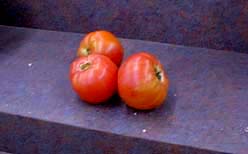Energy Use In Fruit And Vegetable Production
Fruits and vegetables are essential in a balanced diet because of their high content in carbohydrates and various vitamins and minerals. For example, citrus fruits, strawberries and dark leafy vegetables such as spinach and chard are excellent sources of vitamin C, whereas yellow-orange fruits are considered outstanding sources of beta-carotene, the precursor of vitamin A.
Fruit production
Apples
In Canada, especially in British Columbia, Québec and Ontario, and in the United States, petroleum products are use to operate the machinery used in orchards, accounting for a large percentage of the total energy input. The second largest input is for pesticides. Also, the labor required (395 hours/ha) for apple production is large compared to other crops. Overall, the energy input is 121 millions kJ/ha while the yield in fruit is about 128 million kJ/ha, making the output:input ratio 1.1:1, which is very low.
Vegetables production
Potatoes
Potatoes are one of the most frequently eaten vegetables in Canada and is one of the most heavily consumed plant foods worldwide. In the US, for example, about 61 kg of potatoes are consumed per person per year (Pimentel, 1996).The energy output:input ratio for potato production is 1.2:1 in the US, and 1.6:1 in the UK, which is in both cases very low. This is due primarily to high energy inputs, where petroleum products, machinery and fertilizers account for more than two-thirds of the energy inputs. The total energy input for New York potato production is 67 million kJ/ha while the potato yields 82,5 million kJ/ha.
Spinach
Spinach, a green leafy vegetable, is not a major vegetable throughout the world but is very valuable nutritionally since it provides iron, vitamins A and C and riboflavin. However, its production is one of the least efficient in all vegetables: the output:input ratio is only 0.2:1, the overall energy cost being 53.5 million kJ/ha and the spinach yield being 12.1 million kJ/ha. This negative ratio means that about 21 kJ/ha of fossil fuel are "lost" to produce each kcal of spinach. And as for the other vegetables and fruits, the largest energy inputs are for nitrogen (50%), fuel and machinery.
Tomatoes
Below: tomatoes.
Even though tomatoes are fruits botanically speaking, they are included in this section because they are usually consumed as vegetables. Tomato production is slightly more efficient in its use of energy, yet the output:input ratio is still very low because of the high energy inputs required by fertilizers , machinery and fuels. The average yield of Californian tomato production is 41.4 million kJ/ha, resulting in an output:input ratio of 0.6:1. This means that about 8.4 kJ of energy need to be used for every kcal of tomato produced.